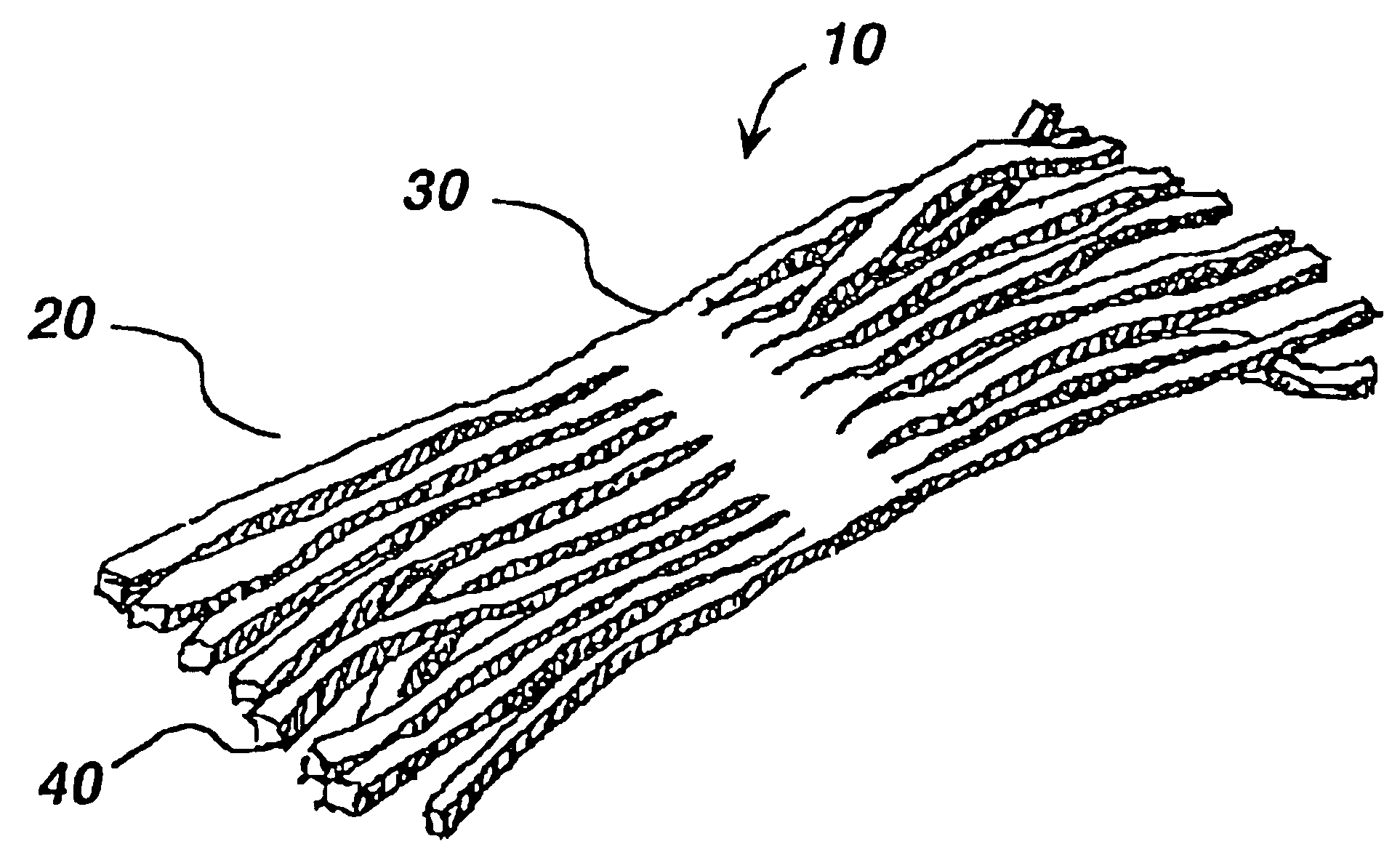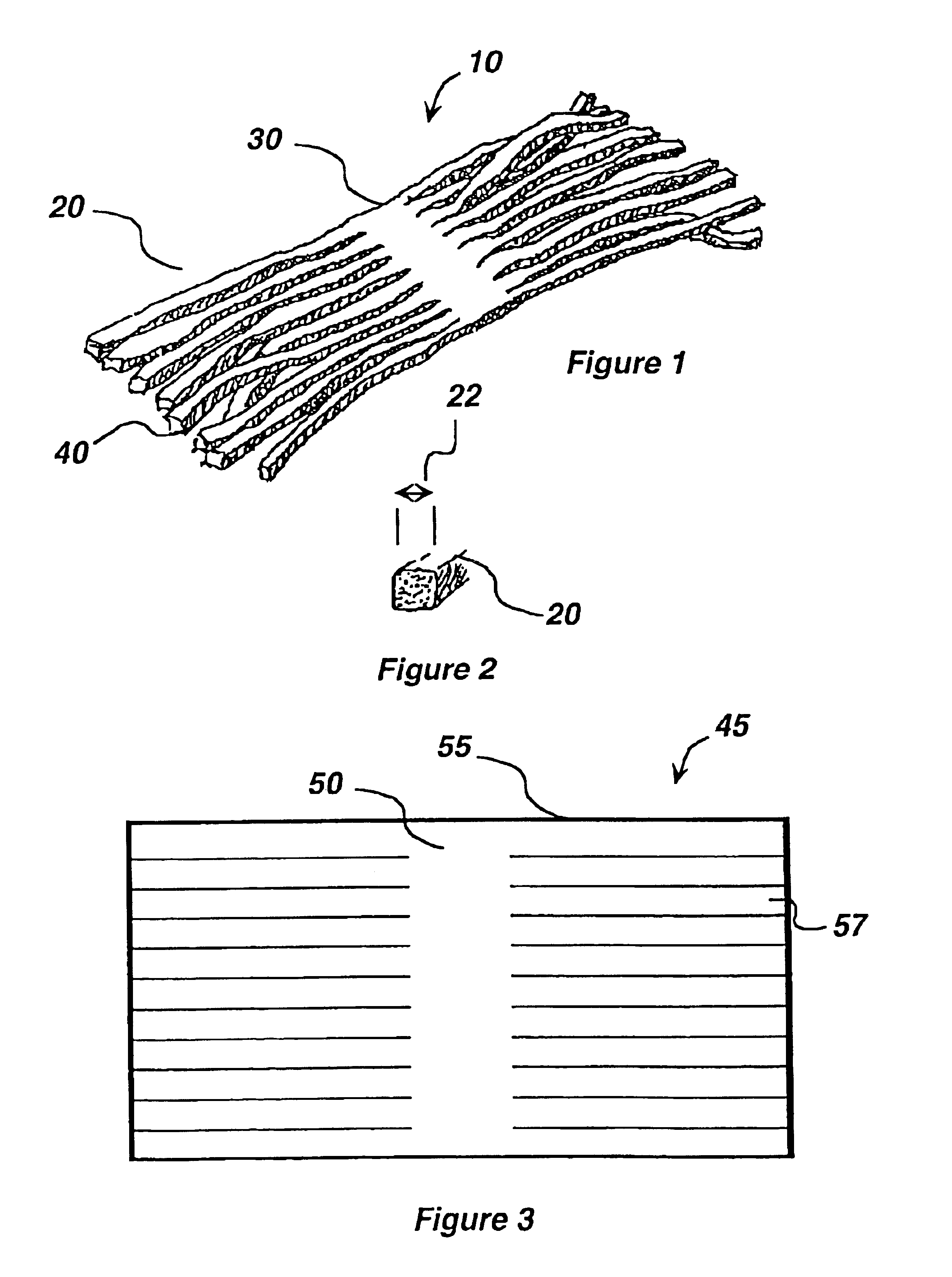Silver-containing compositions, devices and methods for making
a composition and silver-containing technology, applied in the field of silver-containing compositions, can solve the problems of skin and underlying tissues wounds, damage to such tissues, and diminished protective function, and achieve the effect of preventing the negative effects of system-wide administration
- Summary
- Abstract
- Description
- Claims
- Application Information
AI Technical Summary
Benefits of technology
Problems solved by technology
Method used
Image
Examples
example 1
Formation of a Matrix Including Acrylamide
[0137]A mixing tank was charged with 161.4 kg of water and 9.1894 kg of acrylamide, 0.10347 kg of NNNN′-methylenebisacrylamide, and 9.3046 kg of glycerol were added and mixed. Then 1.0213 kg of guar gum non-gellable polysaccharide was dispersed in a mixture containing 0.9770 kg of isopropyl alcohol and 2 kg of water. The solution of guar gum was then added and dispersed into the acrylamide mixture. After suitable mixing, 0.1042 kg of TEMED was added and polymerization was catalyzed with 0.0999 kg ammonium persulphate.
[0138]While the batch was still liquid, it was poured into molds to form sheets. After gelling had occurred, sheets were transferred to a dessicator and dehydrated to form a stable intermediate stock sheet. Prior to cutting to size, the stock material was re-hydrated in a humid atmosphere. After cutting, the material was coated with petrolatum. The resulting wound dressing device was then sealed into appropriate packaging and ir...
example 2
Absorption Capacity of Polyacrylamide Matrix
[0139]It was determined that a preferred matrix material composed of cross-linked polyacrylamide and embedded natural vegetable gum absorbed approximately seven times its weight in water. Saturation of a flat sheet of matrix material with a thickness of 0.9 mm was achieved in approximately 22 hours of continuous exposure to excess water. A similarly sized piece of flat matrix material was cut into thin strands with a calculated 200% increase in overall surface area. The total water absorption of this material was also approximately seven times its weight. However this material achieved saturation in approximately five hours. Similar comparisons were made between an intact matrix and a matrix cut in such a way as to increase the surface area between 150% and 300%. These studies revealed that the matrices retained their overall absorption capacity but there was an increased rate of absorption proportional to the increase in surface area.
example 3
Matrix Absorption Capacities for Various Natural Substances
[0140]Matrices, cut into strands, were tested for absorption capacities on a variety of natural aqueous based viscous fluids. These fluids included water containing salt (0.15 M salinity), cow's whole milk, egg whites from chicken eggs, yogurt, and fetal bovine serum. The absorption of moisture by the test matrix strands ranged between 3.2 and 7.3 times the original weight of the tested devices.
PUM
| Property | Measurement | Unit |
|---|---|---|
| Fraction | aaaaa | aaaaa |
| Fraction | aaaaa | aaaaa |
| Fraction | aaaaa | aaaaa |
Abstract
Description
Claims
Application Information
 Login to View More
Login to View More - R&D
- Intellectual Property
- Life Sciences
- Materials
- Tech Scout
- Unparalleled Data Quality
- Higher Quality Content
- 60% Fewer Hallucinations
Browse by: Latest US Patents, China's latest patents, Technical Efficacy Thesaurus, Application Domain, Technology Topic, Popular Technical Reports.
© 2025 PatSnap. All rights reserved.Legal|Privacy policy|Modern Slavery Act Transparency Statement|Sitemap|About US| Contact US: help@patsnap.com



